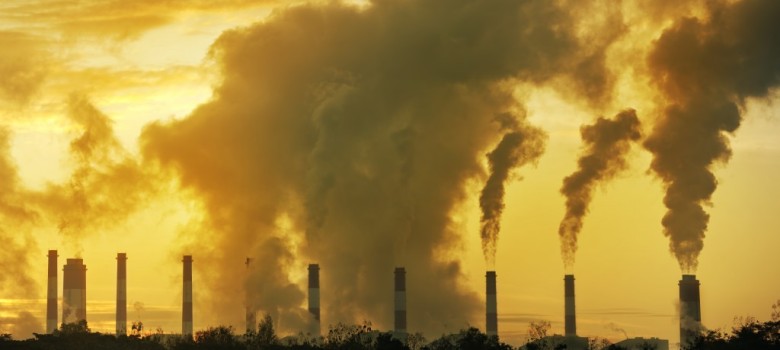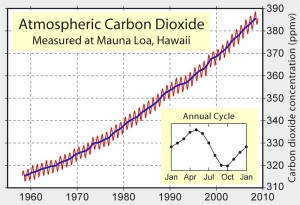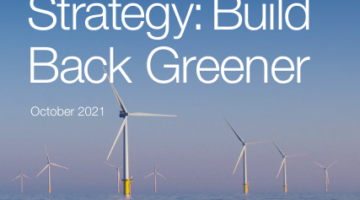
400ppm, What’s the big deal?
It’s been widely reported over the last couple of weeks that Carbon Dioxide levels in the atmosphere have exceeded 400 parts per million. It’s a big deal, for several reasons:
1. Levels have been rising on an upward curve and its all down to us
We have measured CO2 concentration in the atmosphere from Mauna Loa in Hawaii for 55 years now, and every year it has been increasing. When we first started recording the CO2, back in the 1950’s, levels were well below 320ppm. Even in 2009, levels were at 386ppm, so it is clear that the upward trend is accelerating.
Using palaeoclimate records, such as ice cores from the Arctic, we can look back past these instrumental records. They show levels of carbon dioxide in the atmosphere have not been this high for at least 800,000 years. So it’s a pretty big deal historically.
And it has been conclusively proved that this is all down to man-made carbon emissions. Not even the fiercest climate sceptics debate this point – we are 100 percent certain that CO2 is increasing because of our activities. There just isn’t another possible source of such huge levels of emissions. To demonstrate, emissions from fossil fuels and cement production is 9.14 gigatonnes / year at the moment, but was almost half this 25 years ago.
2. It puts us right on course for the catastrophic climate change that has been predicted by the IPCC
The more carbon dioxide in the atmosphere, the greater the greenhouse effect, and the greater the increase in global temperature. And unfortunately the current rates of emissions fall in line with some of the worst predictions that scientists have made in the last few IPCC reports. It means that if we carry on like this, the temperature could increase by a catastrophic five or six degrees plus.
Even at the current concentrations, we are guaranteed climate change of 2 degrees or more. And it is of course going to be difficult to turn the world economy around quickly enough to stop carbon dioxide levels from peaking at much greater levels. How quickly we act now can drastically alter this upward curve in emissions.
Not only does the carbon dioxide we emit enter the atmosphere and cause global warming, it also enters the oceans and leads to ocean acidification. Over the past few decades there has been a measurable increase in the acidity of the oceans, so this is not just a theory, it is happening right now. Why is this important? A change in the acidity of the ocean means much of the biodiversity of the oceans will be lost – shellfish will no longer be able to grow their shells, fish will have their life cycles affected and the net product is huge damage to marine ecosystems. Some seafood could be off the menu permanently.
3. It could act as a rallying call
So we know it is important, but what can we, the average consumer, do about it? Well, there’s plenty we can do to reduce our carbon footprint and cut our energy use. Every little change can help slow the upward curve of CO2 emissions. Take a look around the GreenAge site and get some ideas.
Author: Alan Bouquet













No Comments yet! Be the first one.